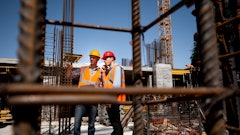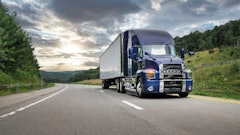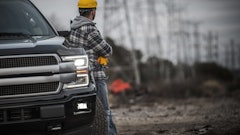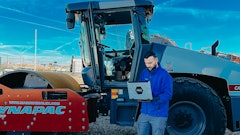
While it might sound like a $10 word to impress your friends at cocktail parties (and we’re not saying it won’t), antifragility is both a biological concept and a critical business model for building organizational flexibility and agility into business structures that, in effect, make them less risk-prone.
In this article, we break down antifragility theory and concepts into understandable terms and provide five actionable takeaways for how you can build an antifragile organization that wins more bids and is better equipped to (in spite of these worrying occupational numbers) respond more quickly to unexpected change. Becoming antifragile as an organization, after all, can result in empowered cross-functional collaboration and will ultimately make you more productive and profitable.
What Is Antifragility?
Antifragility is a concept first coined by a mathematician, scholar, and former hedge fund manager named Nassim Nicholas Taleb, who essentially was frustrated that the existing financial terms used to describe the opposite of "fragility" (e.g., "robustness," “resiliency”) were inaccurate. Taleb outlined these concepts in his 2012 book published by Random House.
In essence, being “antifragile”–whether an organism, a person, or a company–means that when the entity is exposed to external stressors, market instabilities, or risk, they grow stronger and benefit from the event. It is the exact opposite of “fragility,” a term Taleb describes as possessing “an accelerating sensitivity to a harmful stressor” (e.g., a smashed vase on the floor, the result of an accidental bump and fall). Similar (but distinct) terms include resiliency—a state of resistance to shock, remaining unscathed but in a stagnant state of growth—and robustness, a general state of healthiness and strength. The distinction, here, of an antifragile organization would be it benefits, and grows stronger, from the change.
Why Is Antifragility Important?
Large companies may grow complacent and become indifferent to potential change—resulting in ridged organizational structures that are not conducive to randomness and sudden stress. Think, for example, how in nature when a queen bee dies, a frantic hive chaotically rushes to replace her.
Business research has looked to understand why start-up companies thrive in ambiguity, while some of the largest companies have fallen by the wayside. What are some of the takeaways?
“Start-ups’ innovation activities differ significantly from those of traditional established firms,” authors observe. “Their needs and methods of operation are different compared to mature companies,” with start-ups possessing “adaptability and, in many cases, [… the ability] to rapidly generate new solutions to face the effects” (like the global COVID-19 pandemic).
In construction, a particularly disjoined industry, having antifragility—the ability to thrive amidst chaos (e.g., from change orders to rework)—is critical, with supply chain researchers positing the construction industry adopt an “antifragile supply chain” to “maintain and improve the competitive situation, and functional and environmental criteria of the company in order to deal with complexity and chaos.”
5 Ways to Build an Agile, Antifragile Construction Company
Now that we’ve discussed what antifragility is at a high level and why it’s important, here are five ways you can build an agile, antifragile construction company:
1. Get Your Skin in the Game
Taleb uses the well-known “skin in the game” idiom, the basic concept that if you’re not involved with achieving a goal, you face no risk and also don’t stand to gain anything.
When companies involve themselves in construction forecasting, Taleb would likely insist that both a construction owner and his employees contribute, as a forecast impacts both – just as how inventory managers should have a voice in the KPIs their performance is measured against.
Everyone to the forecasting table is not just a good motivator; it unlocks the wisdom of crowds, which increases the accuracy of forecasts/prediction because a crowd's individual judgments can be modeled as a probability distribution of responses with the median centered near the true value of the quantity to be estimated.
2. Decentralize Your Org Structure
Consider our earlier queen be scenario. You don’t want to demobilize your project manager when you’re on vacation.
Consider how Milwaukee Tool creates “empowered leaders” that are given the tools to become subject matter experts, equipped to be agile to supply chain disruptions while delivering the next generation of trade-focused power tools. Or how Netflix empowers their employees (and reciprocally their company) by encouraging “decision-making by employees” while also mandating they “communicate candidly and directly, share information openly, broadly, and deliberately” such that information silos don’t create new fragilities. Or how Facebook (pre-Meta) encouraged employees to “move fast and break stuff” in an obsessed commitment to innovation.
Indeed offers some of the following recommendations for decentralizing your organization for better company outcomes:
- Establishing your company values such as the ones we discussed above that prioritize empowering employees to be decision-makers and having a seat at the table.
- Including all employees (as above)
- Prioritizing training, such as critical safety programs
- Developing a culture of teamwork
- Encouraging growth
3. Adopt a Flexible Equipment Inventory Management and Materials Supply Chain
It shouldn’t be understated how important it is to have flexibility in your jobsite management—particularly with historically rising materials prices and worrying labor shortages (discussed earlier).
It’s critical that when you encounter a sudden change order, the team is empowered to rapidly respond, your inventory manager armed at the ready to transfer equipment from one site to another and avoid needless equipment overhead.
Here’s some recommendations to building flexibility into your supply chain:
- Kit your bulk sends: Kitting is a practice used in supply chain management (e.g., ecommerce, retail) in order fulfillment, where for example a retailer may look to optimize the shipment process via barcoding individual items, bundling large orders, and grouping orders being sent to a similar place (like how the post office sorts your mail in your area) to ensure the fastest path for an order. In construction, kitting refers to when a crib manager sends job box full of project-critical tools, equipment, and accessories in one fell swoop while tracking it to and from the jobsite. Some modern apps, for instance, have a free-to-use digital kitting experience that allows you to build a kit using barcodes or Bluetooth trackers – you can assign a single tracking solution to the kit and, with a simple scan with your smartphone or iPad camera, you’ll get an itemized list of this kit’s contents (like a mini-inventory) that can be signed off on, marked for discrepancies, etc.
- Increasing visibility in inventory tracking with IoT: IoT solutions combined with inventory tracking features like the kitting feature above include the ability to create digital bread crumbs and trace equipment in relative real-time as it moves from the crib to the job and back – IoT smart power tools, meanwhile, can be locked out remotely, customized for application-specific work to deliver greater productivity, and utilization data from these tools can be rolled into custom QA reporting for customers and inspectors.
4. Digitize or Die
We’re all likely familiar with McKinsey’s seminal 2016 article that urged the importance of digitization. More recent research from the scholarly journal Buildings promotes and provides frameworks for digitizing construction operations.
Awareness is a crucial ingredient in creating a company that is able to capitalize in context of chaotic events. Digitization offers redundant channels to ensure critical messaging is effectively distributed throughout a company ecosystem.
Just as an antifragile company should seek to decentralize its org structure, it should also mirror said effort in its communication strategy and infrastructure. This is not to say a single source of absolute truth should be avoided. Quite the contrary in fact. This is to say there should be multiple points of access to said plan, so a company can scale without information pinch points requiring upskilling, new hardware and software purchases, or time-intensive chain of command aligned information briefings.
Building toward industry interoperability is also critical for construction businesses to govern how project data is securely shared with third parties or partners. Combating with labor shortages, owners and the industry at large need to build more efficient execution plans to drive less rework.
5. Plan for Addressing Technical Debt
While it’s important to digitize construction operations, with technology comes technical debt. As such, we offer some advice to build technology infrastructure with more agility while acknowledging the reality of technical debt and how it can be best avoided.
Construction companies—the industry at large—face a certain degree of disjointedness by nature. Understanding how to be antifragile in spite of this and thinking through how you might build a more decentralized corporate structure can help you grow stronger as you experience sudden change.


























